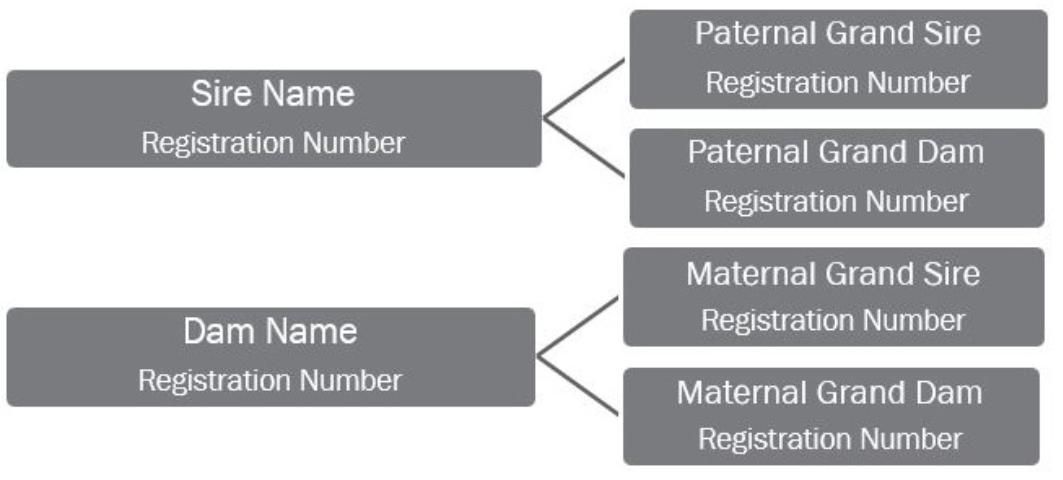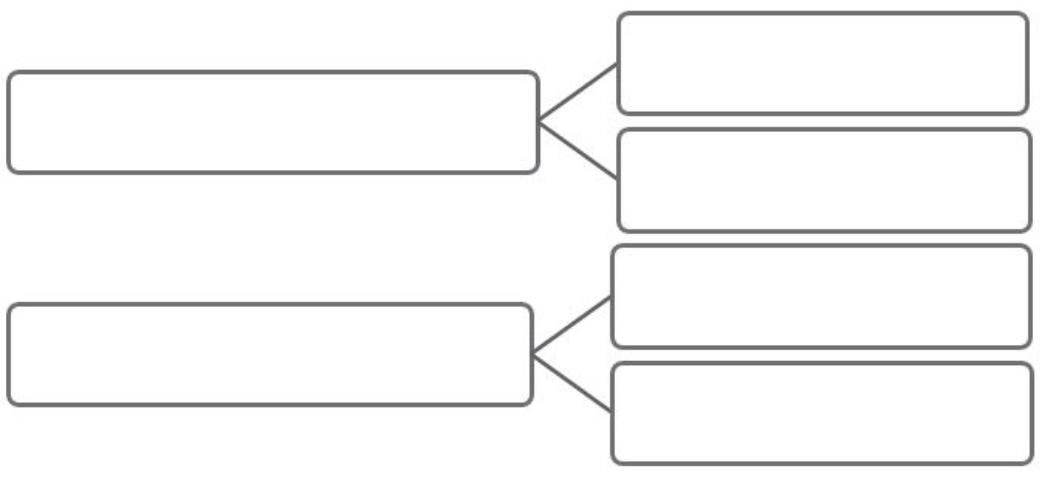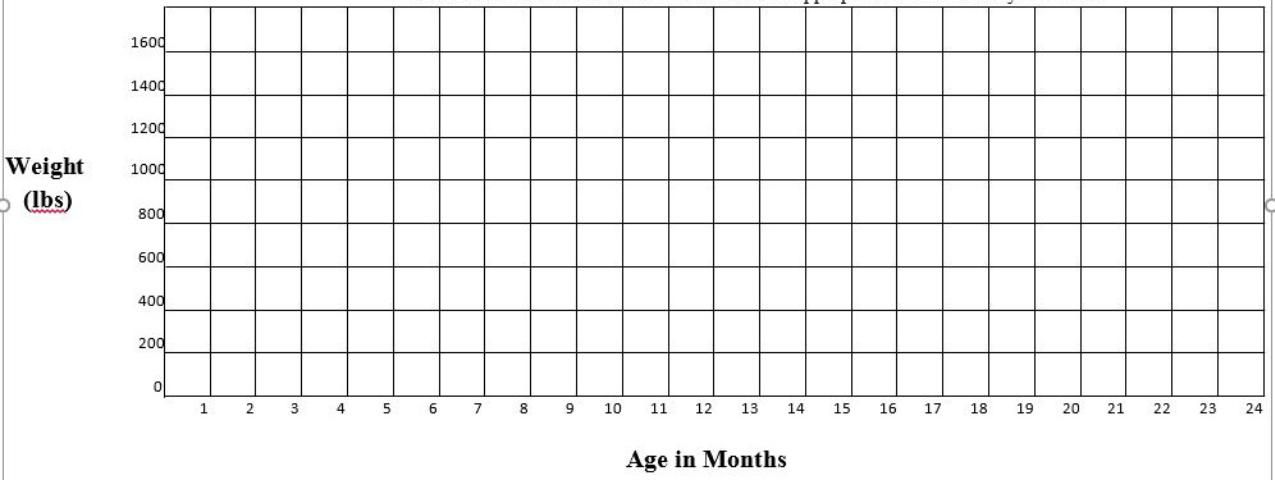Dairy and Dairy Goat Project Record Book (4H DAR 01) is an animal sciences publication suggested for 4-H members age 8 and up. This record book is a tool to guide youth in keeping an accurate record of their expenses and other important records pertaining to dairy cattle or dairy goats.
In EDIS this publication is DLN 4H 054.
This publication is best viewed as a PDF.
Visit the 4-H Youth Development Curriculum website for more information on related project material.
Click Here to print or view the entire project.
Florida 4-H Dairy Record Book
I hereby certify that, as the owner of this project, I have personally been responsible for the care of this (these) animal(s), kept records on this project, and completed this record book.
_____________________________________________________________________________
Member's Signature Date
I/We, the parent(s), certify that my/our child has completed this project and this record book.
______________________________________________________________________________
Parent/Guardian Signature Date
I certify that the above-named individual is an active member of the _______________________ 4-H Club in ____________________ County. I verify that this record book has been completed by the student and is an accurate representation of the project.
______________________________________________________________________________
4-H Club Leader Signature Date
_______________________________________________________________________________
4-H County Extension Agent Signature Date
General Information
Your 4-H Dairy Project
This project record will help you and others see what you have learned about your dairy project animal(s). It will also serve as a way to teach others how to develop an outstanding project.
Primary Objectives of the Dairy Project:
- Become aware of the scope and economic significance of the dairy industry.
- Acquire skills in dairy production through ownership and care of dairy animals.
- Learn marketing, processing, distribution, and use of dairy products.
- Learn and practice principles of cleanliness and sanitation as applied to the production and care of dairy products.
- Learn the nutritive value of dairy products and promote their use.
- Appreciate contributions and applications of scientific research to the dairy industry.
- Develop sportsmanship, cooperation, decision-making, and public speaking skills through participation in demonstrations, tours, judging, and/or exhibits.
To find additional resources to help you with your project, visit https://4-h.org/resources/curriculum/.
The Dairy Cattle Skills for Life series is a set of three levels of project guides that are filled with activities and information that can help you increase your knowledge of dairy cattle. These include Cowabunga!, Mooving Ahead, and Rising to the Top.
Also visit https://extension.psu.edu/monitoring-dairy-heifer-growth for Monitoring Dairy Heifer Growth, an excellent publication from Penn State University.
The Dairy Goat Skills for Life series is a set of three levels of project guides that are filled with activities and information that can help you increase your knowledge of dairy goats. These include Getting Your Goat, Stepping Out, and Showing the Way.
***Note: Make additional copies of pages as you need them***
Individual Animal Identification
Breed:
Birthdate:
Tattoo:
Registration Number:
Ear Tag Number:
Date Acquired:
Name of Breeder or Previous Owner:
Address of Breeder or Previous Owner:
Make copies of this page as necessary.
Pedigree
Enter the name and registration number. Make copies of this page as necessary.


Growth Record Summary
Fill this out monthly to keep track of your animal's growth; use growth charts (Appendix A) for the appropriate breed to compare your animal's breed recommendations.
Dairy Heifer Growth Chart
Use this chart to keep track of your heifer's growth and compare to her breed average.
Use this information to make a decision on an appropriate time to breed your heifer.

Progeny Record
Table 4. Progeny Record
Animal Inventory
- To calculate the Change in Value, subtract the Beginning Value from the Ending Value.
- To calculate the Total Beginning Value, add all the numbers in the Beginning Value column.
- To calculate the Total Ending Value, add all the numbers in the Ending Value column.
- To calculate the Total Change in Value, add all the numbers in the Change in Value column.
- Animals that are purchased during the project will be recorded as a non-feed expense.
- The beginning inventory value will be blank on this page.
- Enter the ending value for all animals in the project at the end of the year.
- Note born, purchased, sold, or deceased animals in the Comments column.
Equipment Inventory
To calculate the total, add all the values that correspond to that column.
Refer to Appendix C for information on Depreciation.
Veterinary and Health Expenses
To calculate the total, add all the values that correspond to the Costs column.
Breeding Record and Expenses
Feed Record
To calculate the total, add all the values that correspond to that column.
Ration Record
Refer to your feed label for the information to complete this page.
Milk or Milk Replacer
% Protein:
% Fat:
Main Ingredient:
Medicated (Yes or No):
Cost per Pound:
Feed (Concentrate Mix)
% Protein:
% Fat:
Main Ingredient:
Medicated (Yes or No):
Cost per Pound:
Juniors: Complete one Feed Records page for all animals by month. For cows kept at a dairy, write the exchange value of milk for feed.
Intermediates: Complete one Feed Records page per animal group (Calves, Heifers, Cows). For cows kept at a dairy, write the exchange value of milk for feed.
Seniors: Complete one Feed Records page per animal group (Calves, Heifers, Cows). For cows kept at a dairy, determine average feed values.
Weigh feed one day each month. Calculate pounds consumed and total value of feed consumed per month.
Refer to Appendix B to complete Feed Records.
Lactation Record
Animal Name or Number:
Registration or Ear Tag Number:
Breed:
Date of Birth:
Freshening Date:
What was Florida's average mailbox price for the most recent year (look up on the internet)? $
To calculate the total, add all the values that correspond to the Value of Milk column.
Make copies of this page as needed.
*Not required. Only fill in if information is available from the dairy.
Show Receipts and Expenses
To calculate the total, add all the values that correspond to that column.
Non-Feed Expenses
- To calculate the total, add all the values that correspond to the Value column.
- Include all expenses NOT already reported in another record. This should include animals purchased during the project year and other expendable items
Labor Record
- To calculate the total, add all the values of the row that corresponds to that month.
- To calculate Annual Labor Hours, add all the values in the Total column.
- Include an estimate of the time spent each month on each of the labor activities listed.
Animals Sold
- To calculate the Total Received, add all the values that correspond to the Amount Received column.
- Animals sold should have a value of 0 on your ending inventory.
Other Income
- To calculate the Total Received, add all the values that correspond to the Amount Received column.
- Record any money given to you to support your project by sponsors, parents, etc.
Financial Summary
Expenses
Beginning Animal Inventory:
Beginning Equipment Inventory:
Veterinary and Health Costs:
Breeding Costs:
Feed Costs for ALL Animals:
Show Expenses:
Non-Feed Expenses:
Total Expenses:
Receipts
Ending Animal Inventory:
Ending Equipment Inventory:
Show Receipts:
Value of Milk Produced:
Value of Animals Sold:
Other Income:
Total Receipts:
Profit/Loss:
Total Receipts - Total Expenses =
Project Activities
Citizenship and Community Service
-
List your citizenship and community service accomplishments.
-
Level: Club, County, District, State, Regional, or National.
Leadership Accomplishments
- Enter any leadership responsibilities you had during this project (e.g., committee assignments, officer positions, leading group activities, etc.)
- Level: Club, County, District, State, Regional, or National.
What skills and knowledge have you gained from this project?
- Be specific when listing skills and knowledge gained.
- For example, instead of writing "sportsmanship," write "learned types of questions judges ask during sportsmanship and researched answers."
Project Pictures
Pictures should show the beginning and end of your project as well as skills you learned. There should be five to eight pictures. Include a caption with each photo. The caption should tell a story and explain what you are doing and why you are doing the things shown in the photo. Pay attention to spelling and grammar.
Project Story
Write an essay about your dairy project experience.
Juniors write a minimum of 100 words. Intermediates write a minimum of 150 words. Seniors write a minimum of 250 words.
Ideas to help you:
- What have you learned?
- What safety practices have you used in your project?
- How have you managed your project?
- What can you do to improve your project next year?
- What did you do to make the best better?
- What goals did you have and how did you accomplish them?
- What workshops or clinics have you attended and what did you learn?
- How can the experiences you have had in this project help you in the future?
Appendix A: Growth Charts
Chart from "Monitoring Dairy Heifer Growth" Penn State College of Agricultural Sciences.
Chart from "Monitoring Dairy Heifer Growth" Penn State College of Agricultural Sciences.
Chart from "Monitoring Dairy Heifer Growth" Penn State College of Agricultural Sciences.
Chart from "Monitoring Dairy Heifer Growth" Penn State College of Agricultural Sciences.
Chart from "Monitoring Dairy Heifer Growth" Penn State College of Agricultural Sciences.
Chart from "Monitoring Dairy Heifer Growth" Penn State College of Agricultural Sciences.
Chart from "Monitoring Dairy Heifer Growth" Penn State College of Agricultural Sciences.
Appendix B: Feed Records
Use the following information to help you complete your Feed Records page.
POUNDS OF FEED: This value represents the pounds of feed consumed by one animal on the date the feed was weighed, multiplied by the number of days in the month.
Example: 5 pounds of concentrate mix were weighed and consumed on March 5.
5 pounds x 31 days = 155 pounds of concentrate consumed in March
VALUE OF FEED: This figure represents the average total value of pounds of feed consumed per animal per month.
Example: If the feed cost $14.00/50 pounds, and you fed 155 pounds, you would calculate the value of the feed as follows.
($14.00 x 155 lbs.)/50 lbs. = $43.40
OR
($14.00/50 lbs.) = $0.28/lb. x 155 lbs. = $43.40
DATE FEED WEIGHED: Select a day each month to weigh the pounds of the different types of feed consumed by your animal(s) and record this date in the appropriate column.
YEAR'S TOTAL FEED EXPENSE: This figure represents the sum of the columns of pounds of feed consumed per month and the value of the feed consumed per month.
PRICE USED PER POUND OF FEED: This figure should represent the price per pound of feed used when calculating the value of each feed ingredient.
Example: If feed costs $14.00/50 lbs., the cost is $0.28/lb.
Appendix C: Depreciation
Depreciation is the annual reduction in value of an item due to use, wear, age, or a combination of these factors. For an item to be depreciable, it must be owned, have a useful life greater than one year, have a finite and determinable life, and have productive use in the business. In agriculture, examples of depreciable items are buildings, vehicles, machinery, equipment, fences, other land improvements, and breeding livestock. Items that are not depreciable are real estate, market livestock, crop inventories, and supplies.
Calculating depreciation is a simple process; however, it becomes complicated because items depreciate at different rates depending on use, condition, and other factors.
For Juniors
When calculating depreciation, you will use a 10% per year depreciation of the original purchase cost for the items you will still have at the end of the project. This includes items you had at the beginning of the project as well as items purchased during the current calendar year.
Example: If you purchased a grooming chute for $800.00, the value of that chute would be 10% less at the end of the year.
$800.00 x 0.1 = $80.00
The beginning value is $800.00 and the ending value is $720.00.
$800.00 – $80.00 = $720.00
For each year you own this grooming chute, it will depreciate by $80.00.
For Intermediates and Seniors
There are three common methods of depreciation: straight line, declining balance, and sum-of-year's digits. For your record book purposes, you will use straight line depreciation. This method gives you a constant depreciation value for each year. The formula is:
(Original Cost - Salvage Value)/Useful Life
Some terms to know:
Original Cost: The price paid for the item.
Salvage Value: Expected market value of the item at the end of 5 years.
Useful Life: Number of years the item is expected to be used.
What is an item's useful life?
5 years: Vehicles, purchased breeding cattle, computers
7 years: Most farm machinery and equipment, fences
10 years: Single-purpose structures
20 years: General purpose buildings
Example: If you purchased a grooming chute for $800.00 with a salvage value of $400.00 and a useful life of 7 years, you would calculate the depreciation as follows.
($800.00 – $400.00)/7 years = $57.14/year
With straight line depreciation the annual depreciation for the grooming chute would be $57.14 each year.